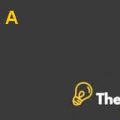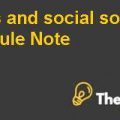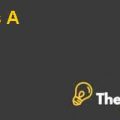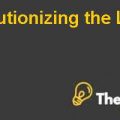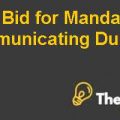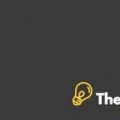THE TOSHIBA ACCOUNTING SCANDAL Case Study Solution
Introduction:
The history of Toshiba goes back to 1873, when Ministry of Engineering supported the development of telegraphic equipment in Japan.Later in 1975, built a factory (Tanaka Seizo-sho) for the sake of modernizing Japan.Another company, Hakunetsu-sha Co was established in 1890, with expertise in manufacturing Light Bulbs.
The two companies shared the passion of innovation, and kept on evolving on their own for decades.Finally in 1939 Shibaura Seisaku-shu (formerly known as Tanaka Seizo-sho) and Tokyo Denki (Formerly known as Hakunetsu-sha Co.) merged up and formed a new entity, Tokyo Shibaura Denki.
During World War II, Tokyo Shibaura Denki grew, by supplying a variety of equipment for the military, but also faced terrible losses as consequence of war. In the post-year period, Tokyo Shibaura Denki started exporting its products, to other regions of the world and capturing other global markets. Overseas subsidiaries were built, resulting in a significant rise in profits.
In 1983, the company’s name was changed for the last time to Toshiba. By this time, Toshiba had earned itself a well-known brand name, with achievements in technological innovations, had successfully expanded to a numerous range of products. The company currently holds 200,000 employees. It develops, manufacture and sells electrical equipment around the world.
After so many decades of success, Toshiba faced a financial scandal in its energy division, where a total loss of US$2.14billion (over a period of 7 years ending 31stMarch 2015) emerged. The manipulation of profits and other balance sheet figures, were sniffed out by Toshiba’s internal audit department in April 2015. And as a result, the CEO and Vice Chairman,along with seven directors resigned.
In Sep 2015, the new CEO of Toshiba, Masashi Muromachi, issued a public notice and apologized its stake holders for breaking their trust. He acknowledged that Toshiba has to work hard, and will take years before it earns back investors trust. He also apologized for the losses, and promised that Toshiba will devote itself to the vow.By returning to its status in the near future.
Drawbacks of Merger with Westinghouse:
The revenue decline of 4.6% in 2012, followed by a further fall of 5% in 2013.Reflects the aftermath effects of 2011 nuclear disaster. The damage can further be highlighted through Net-profit margin, which fell from 2.3% to its half 1.1%. Which is probably, due to impairment losses from written off assets or curved-down revenues.However, the positive profit margins indicate that as a group, Toshiba still stands strong and kept on making profits, (though lower before) until 2015.
Negative ROE (of -3.5%) reflects investor’s disappointment in 2015.When power sector scandal emerged in publicand negative ROA (of -0.5%),indicates downfall in Toshiba’s capability in utilizing its assets.
Also, the shrinking trend of interest cover ratio means that, company’s capability for paying off its debtors is at risk. Providing a covering ability of 2 times in 2015 from 5 times in 2011.
Impairment of Goodwill:
IAS 36- Impairment of Assets, is applicable on goodwill. According to this standard, goodwill is to be tested for impairment at-least once a year, unless indications suggest early testing. Impairment is the amount by which an asset’s carrying value exceeds its recoverable amount. The recoverable amount is the higher of net selling price and value in use.
In short, if an asset stands on a value that is greater than its future economic benefits, then impairment is obligatory. In Toshiba’s case, goodwill impairment is essential, since clear indicationsof impairment exist.The goodwill in Toshiba’s balance sheet partly represents the goodwill of Westinghouse.Which means that, loss in Westinghouse’s brand name, is a loss to Toshiba group. And if the figure of US$1.3billion is correct, then Toshiba must decrease its goodwill by this amount, otherwise it will not be in compliance with Accounting Standards. (Precisely IAS 36 – Impairment)
THE TOSHIBA ACCOUNTING SCANDAL Harvard Case Solution & Analysis
Legal Action against Toshiba:
In addition to the losses in 2015, Toshiba faced several Law suits filed by individuals and group of investors, claiming that their decision in history (between 2008 and 2015), were based on Toshiba’s financials.Therefore, require a remedy for the related losses. In 2016 Toshiba commented that, 45 shareholders were demanding for compensation. Toshiba’s Chief Executive Officer has agreed to the fact that, Toshiba’s financials were inflated during a period of seven years, cause by improper accounting practice. The acknowledgment may have earned Toshiba some gratitude, but have resulted in alot of losses.
A group of investors sued Toshiba Japan, for damages of 16.7 billion yen ($162.3 million).Also,a total of 15 groups and individual, have attempted to boost returns by shifting into shares. Toshiba suspects that, the number of claiming parties will probably rise in future.Hence., it is determined to earn itself back the historical status.
Code of Corporate Governance (CGC):
The biggest failure in Toshiba’s corporate governance was its board’s inability, to communicate company’s strategies with its shareholders. This created an expectation gap between Toshiba’s management and its investors, which could have highlighted management’s profit approach preference, over company’s principals beforehand.......................
This is just a sample partial work. Please place the order on the website to get your own originally done case solution.

